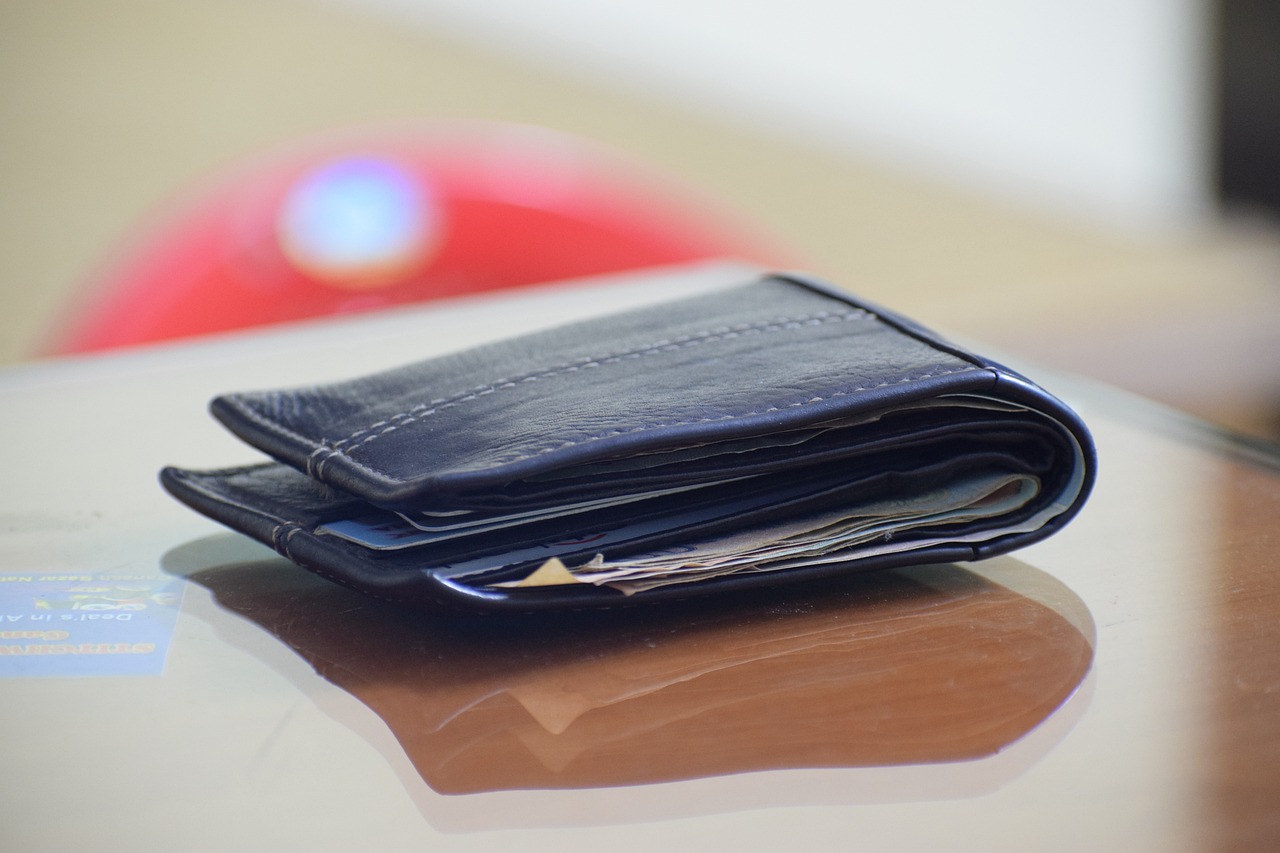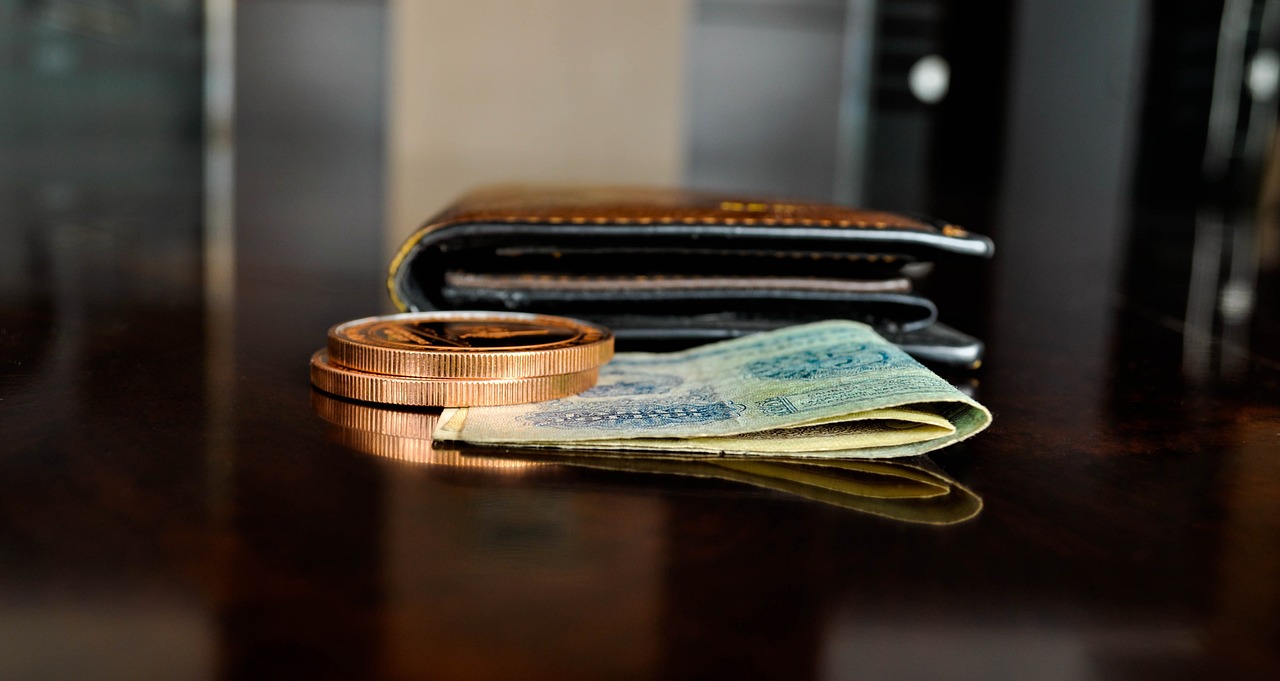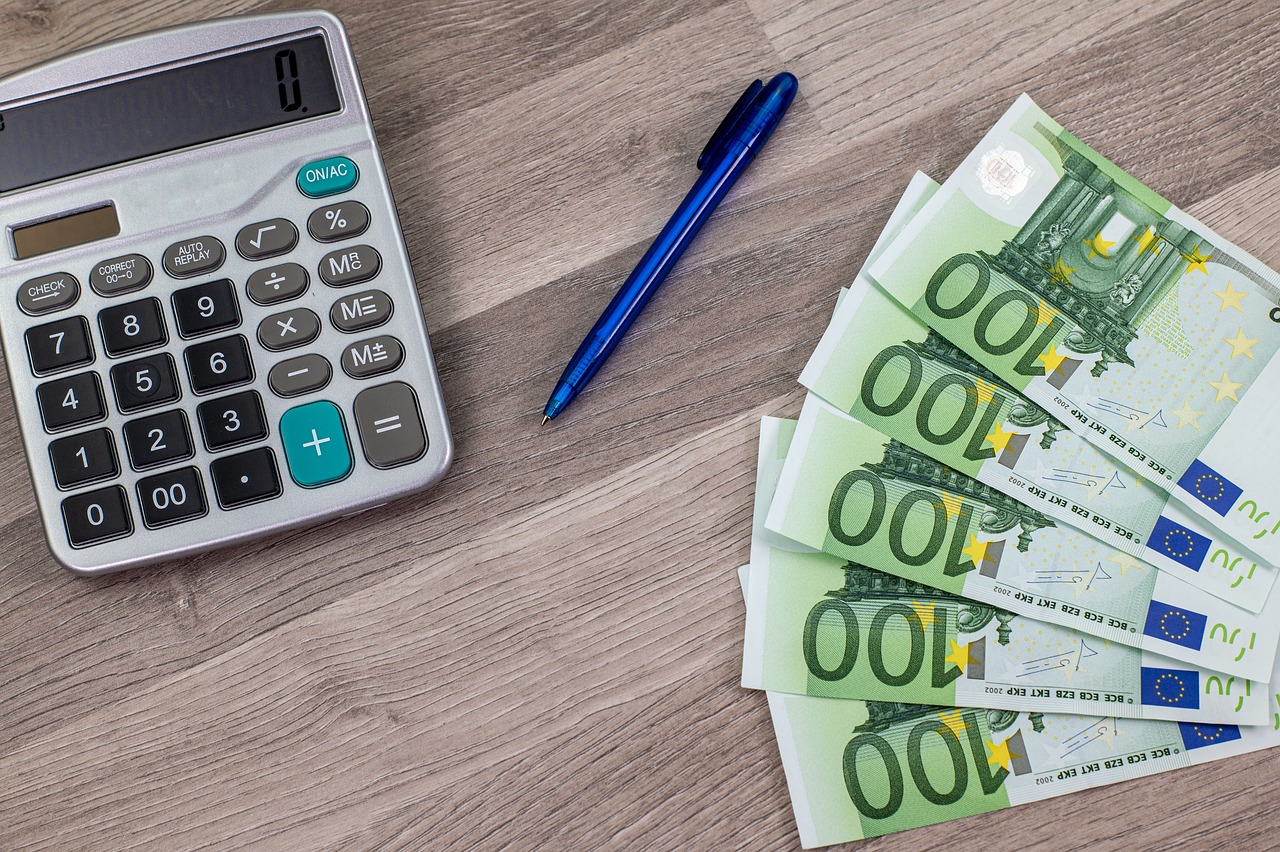How to Maximize Your Wallet’s Features for Trading
In the fast-paced world of trading, having a robust and efficient wallet is more than just a convenience; it's a necessity. Your trading wallet is like your personal vault, holding not just your assets but also the key to unlocking various trading opportunities. So, how can you truly maximize your wallet's features to enhance your trading experience? This article dives deep into strategies and tips that will not only boost your wallet's functionality but also empower you to make smarter trading decisions.
First and foremost, it's essential to understand the different types of wallets available. Each type serves a unique purpose, catering to various trading styles and security needs. For instance, you might opt for a hardware wallet for its unparalleled security, or perhaps a mobile wallet for its convenience on the go. Knowing what each wallet offers allows you to choose the right one that aligns with your trading strategy. Think of it as picking the right tool for a job; using a hammer to drive a screw just won’t cut it!
Once you've chosen your wallet, the next step is to implement robust security measures. In trading, where every second counts and every asset is precious, safeguarding your wallet is paramount. You wouldn’t leave your front door wide open, would you? By setting up two-factor authentication (2FA), you add an extra layer of security that can thwart potential threats. This simple yet effective measure ensures that even if someone gets hold of your password, they would still need a second form of verification to access your wallet.
But how do you choose the right authentication app? There are numerous options available, each with its own features. Apps like Google Authenticator and Authy are popular choices, offering user-friendly interfaces and solid security protocols. When selecting an app, consider factors such as ease of use, backup options, and compatibility with your wallet. It's like choosing a security system for your home; you want something reliable and easy to operate.
Moreover, regular backups are crucial. Imagine losing access to your wallet because of a device failure or accidental deletion—devastating, right? By establishing a routine for backing up your wallet, you can ensure that your data is safe and recoverable. Explore various backup strategies, whether it's cloud storage or physical backups on external drives, and find what works best for you.
Now that you have a secure wallet, let’s talk about integrating trading tools. The right tools can streamline your trading process, making it as smooth as a well-oiled machine. For instance, setting up API connections can significantly enhance your trading efficiency. APIs allow your wallet to communicate with trading platforms, enabling automated trading strategies that can react to market changes in real-time. It’s like having a personal assistant who’s always on the lookout for the best opportunities.
Additionally, utilizing portfolio management tools can help you track your investments more effectively. These tools provide insights into your asset performance, helping you make informed decisions. By integrating these tools with your wallet, you can keep a close eye on your investments and adjust your strategies as needed. Imagine having a dashboard that gives you a bird's eye view of your entire trading landscape!
Finally, staying updated with market trends is crucial for making timely trading decisions. Your wallet can be a powerful ally in this regard. By setting up news alerts and notifications, you can receive real-time updates that keep you informed about market fluctuations. Think of it as having a news ticker tailored just for your trading interests.
Moreover, analyzing trading patterns is essential for optimizing your strategies. Many wallets come equipped with analytical features that allow you to dissect market movements and identify trends. By leveraging these tools, you can make data-driven decisions that enhance your trading success. It’s akin to being a detective, piecing together clues to solve the mystery of market behavior.
- What is the best type of wallet for trading? - The best wallet type depends on your trading style; hardware wallets are great for security, while mobile wallets offer convenience.
- How can I secure my trading wallet? - Implement two-factor authentication, choose a reliable authentication app, and regularly back up your wallet.
- What are API connections? - API connections allow your wallet to communicate with trading platforms for automated trading and enhanced efficiency.
- How do I stay updated with market trends? - Set up news alerts and utilize analytical features in your wallet to keep track of market movements.

Understanding Wallet Types
When it comes to trading, understanding the different types of wallets is like knowing the tools in a toolbox; each serves a unique purpose and can significantly impact your trading experience. There are primarily three types of wallets: hot wallets, cold wallets, and hardware wallets. Each type has its own set of features, benefits, and drawbacks, making it crucial to choose the right one based on your trading needs and security preferences.
Hot wallets are connected to the internet and are ideal for traders who need quick and easy access to their assets. They are user-friendly and perfect for daily transactions, allowing you to buy, sell, or trade on the fly. However, because they are online, they are more susceptible to hacking and other security threats. If you’re someone who frequently trades or engages in short-term investments, a hot wallet might be the best fit for you.
On the flip side, we have cold wallets, which are not connected to the internet. This makes them significantly more secure against cyber threats. Cold wallets are perfect for long-term investors who want to store their assets safely without the need for regular access. They come in various forms, such as paper wallets or USB drives, and are designed to keep your private keys offline. While they may not be as convenient for frequent trading, they offer peace of mind for those looking to hold their investments securely over time.
Then there are hardware wallets, a hybrid of sorts that combine the convenience of hot wallets with the security of cold wallets. These physical devices store your cryptocurrencies offline but can connect to the internet when needed. They are considered one of the safest options for managing your digital assets, as they provide robust security features like encryption and backup options. If you’re serious about trading and want to ensure your investments are well-protected, investing in a hardware wallet could be a wise decision.
To help you visualize the differences, here’s a quick comparison:
| Wallet Type | Connectivity | Security Level | Best For |
|---|---|---|---|
| Hot Wallet | Online | Low | Frequent trading |
| Cold Wallet | Offline | High | Long-term storage |
| Hardware Wallet | Connects as needed | Very High | Secure trading |
Choosing the right wallet type is not just about convenience; it’s about aligning your trading strategy with your security needs. Ask yourself: How often do I trade? and What level of security do I require? By understanding the strengths and weaknesses of each wallet type, you can make a more informed decision that enhances your trading experience.

Security Measures
When it comes to trading, security is paramount. The digital world is rife with threats, and your trading wallet is a prime target for hackers and malicious entities. To safeguard your assets, it's essential to implement robust security measures. Think of your wallet as a treasure chest; if you don’t lock it properly, anyone can take a peek inside. Here are some key strategies to enhance the security of your trading wallet:
One of the most effective ways to bolster your wallet's security is by enabling Two-Factor Authentication (2FA). This process requires not only your password but also a second form of identification, typically a code sent to your mobile device. It's like having a double lock on your front door. Setting it up is usually straightforward, involving the following steps:
- Access your wallet settings.
- Locate the 2FA option.
- Choose your preferred method of receiving codes (SMS, authentication app, etc.).
- Follow the prompts to complete the setup.
By implementing 2FA, you significantly reduce the risk of unauthorized access to your wallet, making it much harder for cybercriminals to infiltrate your accounts.
Not all authentication apps are created equal. When selecting one, consider factors such as user-friendliness, compatibility with your wallet, and additional features. Popular options include:
| App Name | Features | Compatibility |
|---|---|---|
| Google Authenticator | Easy to use, widely accepted | iOS, Android |
| Authy | Multi-device support, backups | iOS, Android, Desktop |
| Duo Mobile | Enterprise-level security | iOS, Android |
Choosing the right authentication app can enhance your wallet's security significantly. Make sure to do your research and pick one that meets your needs.
Imagine losing access to your wallet without any way to recover it; it's a nightmare scenario for any trader. Regular backups are vital for maintaining wallet security. Most wallets provide options for backing up your data, such as:
- Exporting private keys
- Creating recovery phrases
- Using cloud storage solutions
In case of loss or theft, having a backup means you can recover your assets. It's like having a spare key to your house; you never know when you might need it.
Finally, selecting the right wallet type is critical for successful trading. Consider the following factors:
- Security Features: Look for wallets that offer 2FA, encryption, and multi-signature options.
- User Experience: A wallet should have an intuitive interface to make trading easier.
- Asset Support: Ensure the wallet supports the cryptocurrencies you plan to trade.
By carefully considering these elements, you can choose a wallet that not only meets your trading needs but also keeps your assets secure.

Two-Factor Authentication
When it comes to securing your trading wallet, Two-Factor Authentication (2FA) is an absolute game-changer. Imagine locking your front door with not just a key, but also a high-tech security system that requires a code sent to your phone. That’s what 2FA does for your digital assets. It adds an extra layer of protection that makes it significantly harder for unauthorized users to access your wallet. In a world where cyber threats are lurking around every corner, implementing 2FA is akin to wearing a seatbelt in your car; it’s a simple step that can save you from a world of hurt.
Setting up 2FA is usually a straightforward process. Most wallets offer this feature within their security settings. You’ll typically need to download an authentication app like Google Authenticator or Authy, which generates a unique code every 30 seconds. Here’s how it generally works:
- Go to your wallet’s security settings.
- Select the option for Two-Factor Authentication.
- Scan the QR code with your authentication app.
- Enter the code generated by the app to verify the setup.
Once activated, every time you log into your wallet, you’ll be prompted to enter a code from your authentication app. This means that even if someone gets hold of your password, they still won’t be able to access your account without that ever-changing code. It's like having a secret handshake that only you and your trusted device know!
However, it’s essential to choose the right authentication app to ensure maximum security. Some popular options include:
| Authentication App | Features |
|---|---|
| Google Authenticator | Free, easy to use, generates codes without internet access. |
| Authy | Backup and recovery options, multi-device sync, user-friendly interface. |
| Microsoft Authenticator | Supports multiple accounts, cloud backup, and recovery. |
While implementing 2FA is a step in the right direction, it’s equally important to have a backup plan. What happens if you lose your phone or accidentally delete your authentication app? Most wallets provide backup codes during the 2FA setup process. Keep these codes in a safe place, like a password manager or a secure physical location. They will be your lifeline if you ever find yourself locked out of your wallet.
In summary, is not just a recommendation; it’s a necessity in today’s trading environment. By taking this straightforward step, you’ll significantly reduce the risk of unauthorized access to your wallet. Remember, in the world of trading, your security is your responsibility. So, equip yourself with the right tools and stay safe!

Choosing Authentication Apps
When it comes to securing your trading wallet, choosing the right authentication app is akin to picking the right lock for your front door. You wouldn’t settle for just any lock, would you? Similarly, your choice of an authentication app can significantly affect the security of your assets. The primary goal here is to ensure that your wallet is safeguarded against unauthorized access while being user-friendly enough for your daily trading activities.
There are several popular authentication apps available, each with its own set of features and benefits. Here’s a brief overview of some of the most widely used options:
| App Name | Features | Platforms |
|---|---|---|
| Google Authenticator | Time-based codes, offline support | iOS, Android |
| Authy | Multi-device sync, backup options | iOS, Android, Desktop |
| Microsoft Authenticator | Cloud backup, passwordless sign-in | iOS, Android |
Each of these apps has its strengths. For instance, Google Authenticator is favored for its simplicity and offline capabilities, making it a solid choice if you’re concerned about connectivity issues. On the other hand, Authy shines with its multi-device support and backup features, which are crucial if you ever lose your phone. Think of it as having a spare key hidden away just in case!
When selecting an authentication app, consider the following factors:
- Ease of Use: The app should be user-friendly, allowing you to generate codes quickly without a steep learning curve.
- Backup Options: Look for apps that offer backup and recovery features to ensure you don’t lose access to your wallet if your device is lost or damaged.
- Compatibility: Ensure that the app is compatible with the exchanges and wallets you frequently use.
In conclusion, choosing the right authentication app is a critical step in fortifying your trading wallet. By doing your research and understanding the features that matter most to you, you can select an app that not only enhances security but also fits seamlessly into your trading routine. Remember, the goal is to create a barrier against potential threats while maintaining a smooth trading experience!

Backup and Recovery Options
When it comes to trading wallets, one of the most critical aspects that often gets overlooked is the . Imagine losing access to your wallet and all your hard-earned assets due to a simple mistake or a technical glitch. It’s a nightmare scenario that can be easily avoided with the right precautions in place. Regular backups are not just a good practice; they are essential for ensuring that you can recover your wallet in case of loss, theft, or device failure.
So, how do you go about backing up your wallet? First and foremost, you should familiarize yourself with the specific backup features offered by your wallet provider. Most wallets provide a way to create a backup file or seed phrase that you can store securely. This backup is your lifeline, allowing you to restore access to your wallet even if your device is lost or damaged. Here are some common methods for backing up your wallet:
- Seed Phrase: Most wallets will generate a seed phrase, a series of words that can be used to recover your wallet. Make sure to write this down and store it in a safe place, preferably offline.
- Backup Files: Some wallets allow you to create encrypted backup files. These files can be stored on an external hard drive or cloud storage, but ensure they are protected with strong passwords.
- Print It Out: For an extra layer of security, consider printing your seed phrase or backup file and storing it in a safe deposit box or another secure location.
Now, let’s talk about recovery options. If you ever find yourself locked out of your wallet, having a reliable recovery method is crucial. Most wallets will require your seed phrase or backup file during the recovery process. It's important to follow the instructions provided by your wallet service carefully. Entering your seed phrase correctly is vital; even a single incorrect word can prevent you from regaining access. Additionally, some wallets may offer a recovery email or phone number option, adding another layer of security and convenience.
In summary, backing up your trading wallet is not just an option; it’s a necessity. By taking the time to understand your wallet’s backup features and implementing a robust recovery strategy, you can ensure that your investments remain secure, no matter what challenges come your way. Remember, the peace of mind that comes with knowing you can recover your assets is invaluable in the fast-paced world of trading.
Q1: What should I do if I lose my backup seed phrase?
A1: Unfortunately, if you lose your seed phrase, recovering your wallet may be impossible. It's crucial to keep it secure and backed up in multiple locations.
Q2: How often should I back up my wallet?
A2: It's a good practice to back up your wallet every time you make significant changes or transactions, or at least once a month.
Q3: Can I use cloud storage for my wallet backup?
A3: While you can use cloud storage, it's best to encrypt your backup files and use strong passwords to minimize the risk of unauthorized access.
Q4: What if I forget my wallet password?
A4: If your wallet supports password recovery options, follow those instructions. Otherwise, you may need to reset your wallet, which could result in loss of access to your funds.

Choosing the Right Wallet
When it comes to trading, selecting the right wallet is akin to picking the perfect toolbox for a DIY project. You wouldn't use a hammer when you need a screwdriver, right? Similarly, the wallet you choose should align with your trading style and security requirements. There are several factors to consider, and understanding them can make a world of difference in how you manage your assets and execute trades.
First and foremost, think about the type of assets you plan to trade. Are you dealing with cryptocurrencies, stocks, or perhaps a mix of both? Each asset class may require different wallet features. For example, if you're trading cryptocurrencies, you might want a wallet that supports multiple coins and has a user-friendly interface. On the other hand, if you're focused on stocks, a wallet that integrates seamlessly with your brokerage platform would be more beneficial.
Next up is security. In today's digital world, protecting your investments is paramount. Look for wallets that offer advanced security features, such as encryption, two-factor authentication, and backup options. These features act like a security system for your financial assets, ensuring that only you have access. A wallet that prioritizes security can save you from potential losses due to hacks or unauthorized access.
Another critical factor is user experience. A complicated wallet can lead to mistakes, especially when you're in the heat of trading. Look for wallets that are intuitive and easy to navigate. A clean interface can help you focus on what really matters: making informed trading decisions. Additionally, consider the customer support offered by the wallet provider. If you run into issues, having responsive support can be a lifesaver.
Lastly, don't forget about fees. Some wallets charge transaction fees, withdrawal fees, or monthly maintenance fees. It's essential to understand these costs upfront, as they can eat into your profits. Compare different wallets and their fee structures to find one that fits your budget while still offering the features you need.
To sum it up, choosing the right wallet involves a careful balance of functionality, security, user experience, and cost. By taking the time to evaluate these factors, you can ensure that you're well-equipped to tackle the trading world with confidence. Remember, your wallet is not just a storage space; it's a vital tool that can enhance your trading experience and help you achieve your financial goals.

Integrating Trading Tools
Integrating trading tools with your wallet can significantly enhance your trading experience. Imagine having a well-oiled machine where every part works in harmony to help you make informed decisions and execute trades efficiently. By connecting your wallet with various trading tools, you can streamline processes, reduce errors, and ultimately maximize your profitability. But what tools should you consider integrating, and how can they improve your trading strategy?
First off, let's talk about the importance of API connections. APIs, or Application Programming Interfaces, act as bridges between your trading wallet and various platforms or services. They allow you to automate trading strategies, monitor market conditions, and execute trades based on predefined parameters. This means you can spend less time manually placing trades and more time analyzing market trends. Setting up API connections is usually straightforward; most reputable wallets provide detailed instructions on how to do this. Just ensure you’re using secure connections and only integrating with trusted services.
Next, consider utilizing portfolio management tools. These tools help you track your investments, analyze performance, and manage your assets effectively. Integrating such tools with your wallet can provide you with a comprehensive view of your trading activities. For example, you can see how each asset is performing in real-time, which allows you to make quick adjustments as needed. Popular portfolio management tools like CoinTracking or Delta offer features such as profit-loss tracking, tax reporting, and performance analytics, all of which can be linked to your wallet for seamless management.
Moreover, don't underestimate the power of market analysis tools. These tools provide insights into market trends and trading patterns, helping you make informed decisions. Many wallets come equipped with built-in analytical features, but you can also integrate third-party tools for more advanced analytics. By using these tools, you can identify potential opportunities or risks in the market, allowing you to adjust your trading strategy accordingly. The key is to find tools that complement your trading style and provide the insights you need to succeed.
In conclusion, integrating trading tools with your wallet can transform your trading experience from basic to exceptional. By leveraging API connections, portfolio management tools, and market analysis software, you can create a comprehensive trading ecosystem that enhances your decision-making capabilities and boosts your trading efficiency. So, take the time to explore the various options available and find the right tools that will help you maximize your wallet's features.
- What are API connections, and why are they important?
API connections allow your wallet to communicate with other trading platforms and services, enabling automated trading and efficient management of your assets. - How can portfolio management tools help me?
These tools help you track your investments, analyze performance, and manage your assets effectively, providing a comprehensive view of your trading activities. - Are there risks involved in integrating trading tools?
Yes, there are risks, especially if you connect to untrusted services. Always ensure you are using secure connections and reputable platforms.

API Connections
API connections are like the secret sauce in the world of trading; they can significantly enhance your trading efficiency and overall experience. Imagine being able to automate your trading strategies, manage your portfolio seamlessly, and execute trades at lightning speed—all while you sit back and enjoy your coffee. Sounds appealing, right? Well, that’s exactly what API connections can do for you!
At its core, an API (Application Programming Interface) allows different software applications to communicate with each other. In the context of trading, this means that your trading wallet can interact with various trading platforms and tools, enabling you to execute trades, access real-time data, and even analyze market trends without lifting a finger. It’s like having a personal assistant dedicated to managing your trades!
To set up API connections, you will typically need to follow these steps:
- Create an API Key: This is a unique identifier that allows your wallet to access your trading account securely. Always keep this key private!
- Configure Permissions: Decide what actions your API can perform. For instance, you can allow it to read data but not execute trades, depending on your comfort level.
- Connect Your Wallet: Enter the API key into your wallet’s settings to establish the connection.
Once you’ve set up your API connections, the benefits are manifold:
- Automated Trading: You can create algorithms that execute trades based on specific market conditions. This means you can capitalize on opportunities even when you’re not actively trading.
- Real-Time Data Access: Get instant updates on market trends, price changes, and trading volumes, allowing you to make informed decisions quickly.
- Portfolio Management: Integrate with portfolio management tools to track your investments and performance metrics in real-time.
However, while API connections can be incredibly powerful, it’s essential to approach them with caution. Always ensure that you’re connecting to reputable platforms and understand the permissions you’re granting. A well-configured API can be a game-changer, but a poorly set up one could expose your assets to unnecessary risks.
In summary, API connections are a vital feature of modern trading wallets. They not only streamline your trading process but also empower you with tools that can enhance your trading strategy. So, if you’re looking to take your trading game to the next level, diving into the world of APIs is definitely worth considering!
Q: What is an API key?
A: An API key is a unique identifier that allows your trading wallet to securely connect with trading platforms and access your account information.
Q: Are API connections safe?
A: While API connections can be safe, it’s crucial to use them responsibly. Always choose reputable platforms and configure permissions carefully to protect your assets.
Q: Can I automate my trading strategies using APIs?
A: Yes! API connections enable you to create automated trading strategies that can execute trades based on predefined criteria.
Q: How do I set up an API connection?
A: To set up an API connection, you typically need to create an API key, configure permissions, and connect your wallet by entering the API key into the appropriate settings.

Portfolio Management Tools
When it comes to trading, managing your portfolio effectively can be the difference between success and failure. are designed to help you keep track of your investments, analyze performance, and make informed decisions. Imagine trying to navigate a ship without a compass; that’s what trading without the right tools feels like. These tools not only simplify your trading experience but also enhance your ability to respond to market changes swiftly.
One of the primary functions of portfolio management tools is to provide a comprehensive overview of your assets. They allow you to see your holdings at a glance, helping you assess whether your investments are aligned with your trading goals. For instance, you can track various metrics such as profit and loss, asset allocation, and performance benchmarks. By visualizing your portfolio through charts and graphs, you can easily identify trends and make necessary adjustments. This visual representation is akin to a dashboard in a car, giving you all the crucial information you need to drive safely and efficiently.
Moreover, integrating these tools with your trading wallet can significantly streamline your operations. Many portfolio management tools offer features that allow for seamless integration, enabling you to import your wallet data automatically. This means you can spend less time on manual updates and more time focusing on strategy. Some popular portfolio management tools include:
- CoinTracking - Offers advanced tracking and tax reporting features.
- Blockfolio - A user-friendly app that provides real-time updates on your investments.
- Delta - Allows for extensive customization and tracking across multiple exchanges.
Another crucial aspect of portfolio management tools is their ability to help you analyze your trading patterns. By reviewing historical data and performance metrics, you can identify which strategies are working and which aren’t. Think of it as reviewing game footage to improve your performance. This analysis can lead to better decision-making and ultimately, more profitable trades.
Furthermore, many of these tools come equipped with alert systems that notify you of significant market movements or changes in your portfolio’s value. This feature is invaluable for traders who need to react quickly to market fluctuations. You can set alerts based on specific criteria, such as price thresholds or percentage changes, ensuring you never miss a critical opportunity.
In summary, utilizing portfolio management tools is not just beneficial; it’s essential for any serious trader. These tools can provide clarity, enhance decision-making, and ultimately lead to better trading outcomes. As you explore your options, consider how these tools can integrate with your existing wallet to create a cohesive trading experience. Remember, in the world of trading, knowledge is power, and the right tools can empower you to make the most of your investments.
Q: What are portfolio management tools?
A: Portfolio management tools are applications or platforms that help traders and investors track, analyze, and manage their investments effectively.
Q: How do I integrate portfolio management tools with my trading wallet?
A: Most portfolio management tools offer integration options through APIs, allowing you to connect your trading wallet for automatic updates and data synchronization.
Q: Are portfolio management tools free to use?
A: Many portfolio management tools offer free versions with basic features, while premium versions with advanced functionalities may require a subscription fee.
Q: Can portfolio management tools help me with tax reporting?
A: Yes, some portfolio management tools come with features specifically designed for tax reporting, helping you calculate your gains and losses for tax purposes.

Staying Updated with Market Trends
In the fast-paced world of trading, staying updated with market trends is not just an advantage; it's a necessity. Imagine trying to navigate a bustling city without a map or GPS—confusing, right? The same applies to trading. Your trading wallet can be a powerful tool to help you keep your finger on the pulse of the market. By leveraging its features effectively, you can make timely decisions that could significantly impact your trading success.
One of the most effective ways to stay informed is by utilizing news alerts and notifications. Many modern wallets come equipped with features that allow you to set up alerts for significant market movements or news updates. This means you can receive real-time notifications directly to your device, ensuring you never miss a crucial development. For instance, if a major economic report is released or a significant event occurs that could affect market conditions, your wallet can alert you instantly. This immediate access to information can give you a competitive edge in making quick trading decisions.
Moreover, analyzing trading patterns is another essential aspect of staying updated. Your trading wallet may offer analytical tools that help you identify trends and patterns in market behavior. By regularly reviewing these analytics, you can spot opportunities that others might overlook. Think of it like having a personal trainer for your trading strategy—helping you refine your approach based on past performance and current market conditions. For example, if you notice a consistent upward trend in a particular asset, you might decide to invest more heavily based on that historical data.
To maximize the effectiveness of your wallet in staying updated, consider the following strategies:
- Customize Your Alerts: Tailor your notifications to focus on the assets or market segments that matter most to you. This way, you won't be overwhelmed with irrelevant information.
- Utilize Social Media Insights: Many traders share valuable insights on platforms like Twitter or Reddit. Your wallet can often integrate with these platforms, allowing you to see real-time discussions and sentiment around specific trades.
- Engage with Community Features: Some wallets offer community features where you can discuss trends with other traders. Engaging in these discussions can provide you with diverse perspectives and valuable insights.
By implementing these strategies, you can transform your trading wallet from a simple storage solution into a dynamic tool that keeps you informed and ready to act. Remember, the market is constantly changing, and the ability to adapt quickly can be the difference between a missed opportunity and a profitable trade. So, take advantage of your wallet’s features and stay ahead of the curve!
Q1: How can I set up news alerts on my trading wallet?
A1: Most trading wallets have a settings or preferences section where you can customize your notifications. Look for options related to news alerts or market updates and select your preferences based on the assets you trade.
Q2: What are the benefits of analyzing trading patterns?
A2: Analyzing trading patterns helps you identify trends that can inform your trading decisions. By understanding past market behavior, you can make more informed predictions about future movements.
Q3: Can my trading wallet integrate with social media?
A3: Many modern trading wallets offer integration with social media platforms, allowing you to follow market sentiment and discussions in real-time, which can be beneficial for your trading strategy.

News Alerts and Notifications
In the fast-paced world of trading, timing is everything. Imagine being a hawk, perched high above, scanning the landscape for the slightest movement. This is how you should approach market news and updates. Setting up within your trading wallet is akin to having a personal assistant who whispers important updates in your ear, ensuring you're never caught off guard. By leveraging these features, you can stay ahead of market trends and make informed decisions that can significantly impact your trading success.
Most trading wallets come equipped with customizable notification settings. This means you can tailor alerts based on your trading preferences. For example, you might want to be notified about significant price changes, economic reports, or even major news events affecting the markets. By doing so, you can react swiftly, much like a seasoned trader who knows when to strike. Here’s how you can set up these notifications effectively:
- Access Notification Settings: Navigate to your wallet’s settings menu and look for the notifications section.
- Choose Your Alerts: Select the types of alerts you want to receive—price movements, news events, or market trends.
- Set Frequency: Decide how often you want to receive these notifications. Real-time alerts can be crucial for day traders.
Additionally, consider integrating your wallet with news platforms or financial news apps. Many wallets allow you to sync with external services, providing you with a steady stream of information. This integration can be a game-changer, enabling you to access real-time data without constantly checking multiple sources. Think of it as having a direct line to the heartbeat of the market.
Moreover, some wallets offer advanced features that allow you to filter news based on your interests. For instance, if you're primarily trading in tech stocks, you can set alerts specifically for tech-related news. This targeted approach not only saves you time but also ensures you’re focusing on the information that matters most to your trading strategy.
As you set up your notifications, remember to strike a balance. While it’s essential to stay informed, too many alerts can lead to information overload, causing you to miss out on critical updates. Aim for a manageable number of notifications that keep you informed without overwhelming you. After all, in trading, clarity is key.
To summarize, utilizing news alerts and notifications is a vital strategy for any trader looking to maximize their wallet's features. By being proactive and setting up tailored alerts, you can ensure you're always in the loop, ready to make decisions that align with your trading goals. Whether you’re a novice or a seasoned trader, these features can significantly enhance your trading experience.
Q: How do I set up news alerts in my trading wallet?
A: You can typically find the notification settings in your wallet's menu. From there, customize the types of alerts you want based on your trading preferences.
Q: Are there any specific apps that work well with my trading wallet for news alerts?
A: Yes, many wallets allow integration with financial news platforms like Bloomberg, CNBC, or even social media feeds for real-time updates.
Q: Can I customize the frequency of my notifications?
A: Absolutely! Most wallets provide options to set how often you receive alerts, allowing you to choose real-time notifications or daily summaries.

Analyzing Trading Patterns
When it comes to trading, understanding the rhythm of the market is like learning to dance. You need to recognize the steps, anticipate the moves, and react swiftly. Analyzing trading patterns is an essential skill that can significantly enhance your decision-making process. By identifying trends, reversals, and continuations, you can position yourself to maximize profits and minimize losses. But how do you effectively analyze these patterns? Let’s dive into some key strategies.
First and foremost, it's essential to familiarize yourself with the different types of trading patterns. These can be broadly categorized into two groups: continuation patterns and reversal patterns. Continuation patterns signal that a trend is likely to continue, while reversal patterns indicate a potential change in direction. Here are some common examples:
| Pattern Type | Pattern Name | Description |
|---|---|---|
| Continuation | Flags | Short-term consolidation that often leads to a continuation of the previous trend. |
| Continuation | Triangles | Price consolidates into a triangle shape, suggesting a breakout in the direction of the prior trend. |
| Reversal | Head and Shoulders | A pattern that signals a reversal from bullish to bearish or vice versa. |
| Reversal | Double Tops and Bottoms | Patterns that indicate a reversal after a strong trend, characterized by two peaks or troughs. |
Once you’ve grasped these patterns, the next step involves utilizing your trading wallet’s analytical tools. Most modern wallets come equipped with features that allow you to visualize historical price data, making it easier to spot these patterns. Charts are your best friends here! By using candlestick charts, line charts, or bar charts, you can see how prices have moved over time, helping you identify potential entry and exit points.
Moreover, it’s crucial to combine your pattern analysis with other technical indicators. Indicators like moving averages, Relative Strength Index (RSI), and Bollinger Bands can provide additional context to your findings. For instance, if you notice a double top pattern forming, but the RSI shows overbought conditions, this could strengthen the case for a potential reversal. On the other hand, if the moving average is trending upwards while you spot a flag pattern, it might suggest that the upward trend is likely to continue.
But wait, there's more! Don’t forget the importance of volume in your analysis. Volume measures the number of assets traded within a specific timeframe and can serve as a confirmation tool. For instance, if a breakout occurs on high volume, it’s often seen as a stronger signal compared to a breakout on low volume. This is because high volume indicates increased interest and participation from traders, lending credibility to the price move.
Lastly, always remember that no analysis is foolproof. Market conditions can change rapidly, and patterns can fail. Therefore, it's essential to have a solid risk management strategy in place. Setting stop-loss orders and defining your risk-reward ratio will help protect your capital, allowing you to trade with confidence.
In summary, analyzing trading patterns is a powerful way to improve your trading decisions. By understanding different patterns, utilizing analytical tools, and incorporating other indicators and volume analysis, you can enhance your trading strategy significantly. So, get out there, start analyzing, and let your wallet work for you!
- What are trading patterns? Trading patterns are formations created by the price movement of an asset, indicating potential future price movements.
- How can I identify trading patterns? You can identify trading patterns by analyzing charts and using technical indicators to spot trends and reversals.
- Are trading patterns always reliable? No, trading patterns can fail, so it's important to use them in conjunction with other analysis tools and risk management strategies.
- What tools can help with pattern analysis? Most trading wallets offer analytical tools, including various chart types and technical indicators, to assist in pattern analysis.
Frequently Asked Questions
- What types of wallets are available for trading?
There are several types of wallets you can use for trading, including hardware wallets, software wallets, and paper wallets. Hardware wallets are physical devices that store your assets offline, providing enhanced security. Software wallets, which can be desktop or mobile apps, offer convenience and ease of access. Paper wallets are a more traditional method, where you print your keys on paper, but they require careful handling to avoid loss.
- How can I secure my trading wallet?
Securing your trading wallet involves several measures. First, enable two-factor authentication (2FA) to add an extra layer of security. Choose a reliable authentication app for this purpose. Additionally, regularly back up your wallet and store your recovery phrases in a safe place. Keeping your software updated and being cautious of phishing attempts also goes a long way in protecting your assets.
- What are API connections, and how do they benefit trading?
API connections allow your wallet to communicate with trading platforms and tools, streamlining the trading process. By setting up API connections, you can automate trades, access real-time market data, and manage your portfolio more efficiently. This integration can save you time and help you make quicker trading decisions.
- How can I stay updated with market trends using my wallet?
Your trading wallet can help you stay informed about market trends by allowing you to set up news alerts and notifications. By configuring these features, you can receive real-time updates on market movements, which can be crucial for making timely trading decisions. Additionally, many wallets offer analytical tools to help you analyze trading patterns and optimize your strategies.
- What should I do if I lose access to my wallet?
If you lose access to your wallet, the first step is to use your backup and recovery options. Most wallets provide a recovery phrase or seed phrase that can help you restore access. If you haven't backed up your wallet, recovery may be challenging, so it's essential to always keep your recovery information secure and accessible.


















